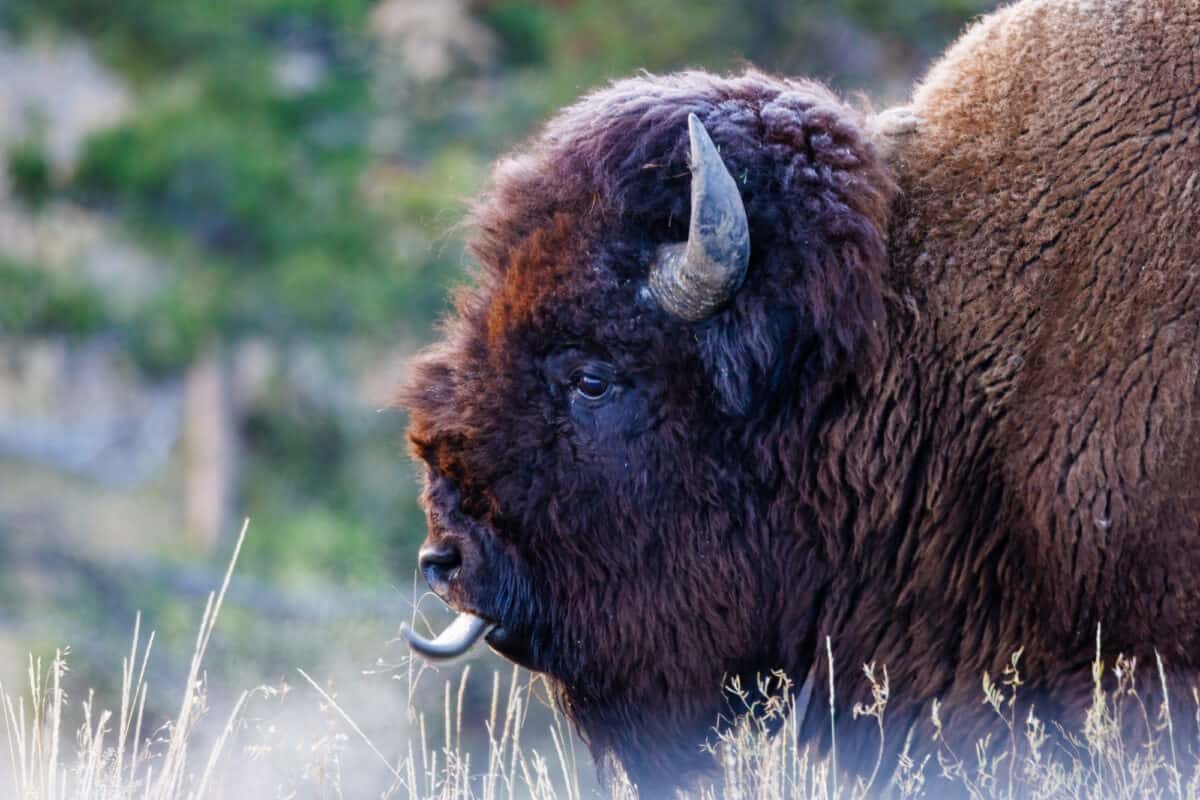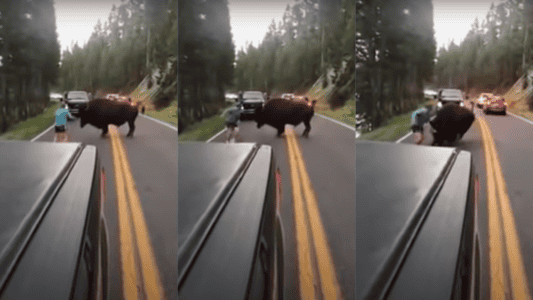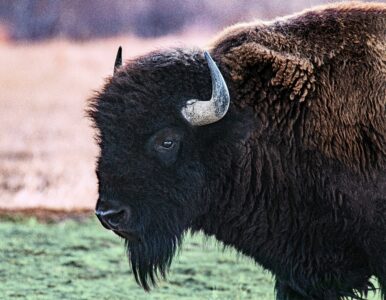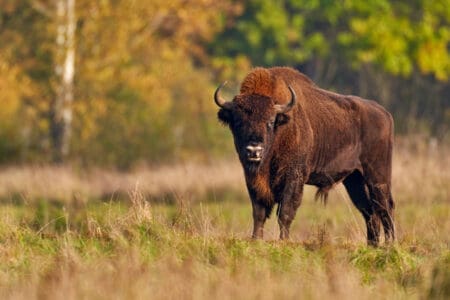American Bison are not only the largest mammal in America, but since 2016 also the country’s national mammal! These massive yet agile mammals are known as Bison, American Buffalo, or just Buffalo – but don’t confuse them with the true buffalo of the Bubalina subtribe!
Native to North America, Bison are characterized by not only their large size but also the large humps between their shoulders and shaggy brown coats. And despite their large size, these animals can run up to 45 miles per hour! Let’s have a further look at these American legacies.
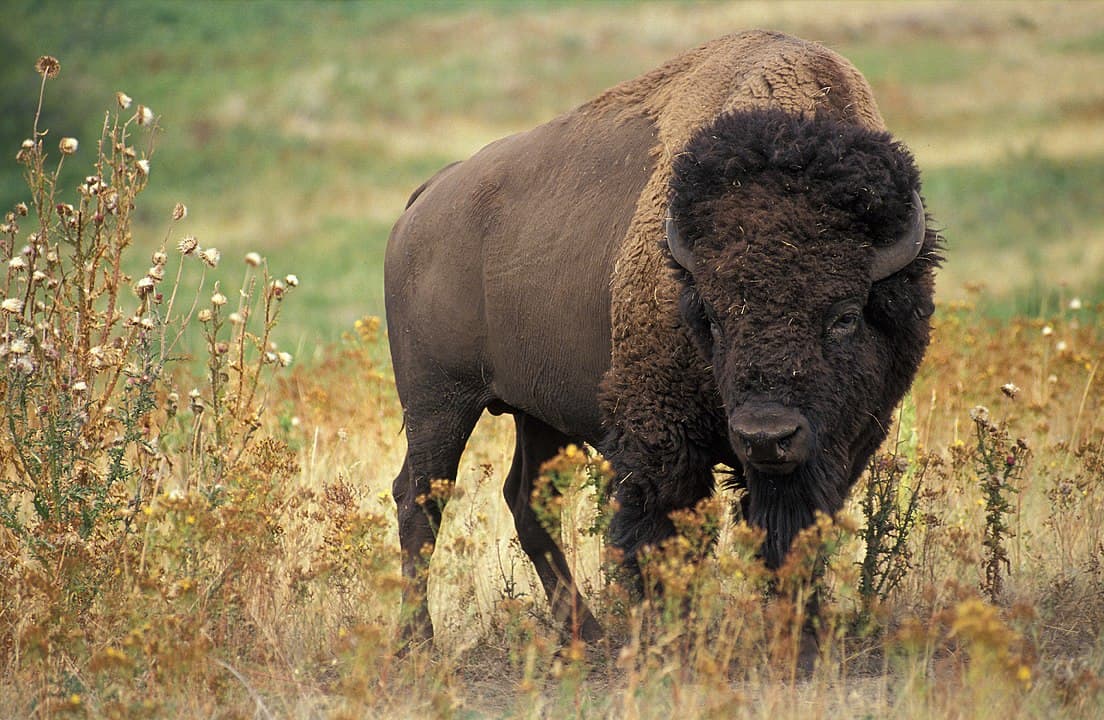
Some Quick Bison Facts
| Scientific Name | Bison bison |
| Class | Mammal |
| Size | 4 to 6 feet tall1,000 to 2,000 pounds |
| Conservation Status | Near Threatened according to the IUCN Red List |
Bison Overview
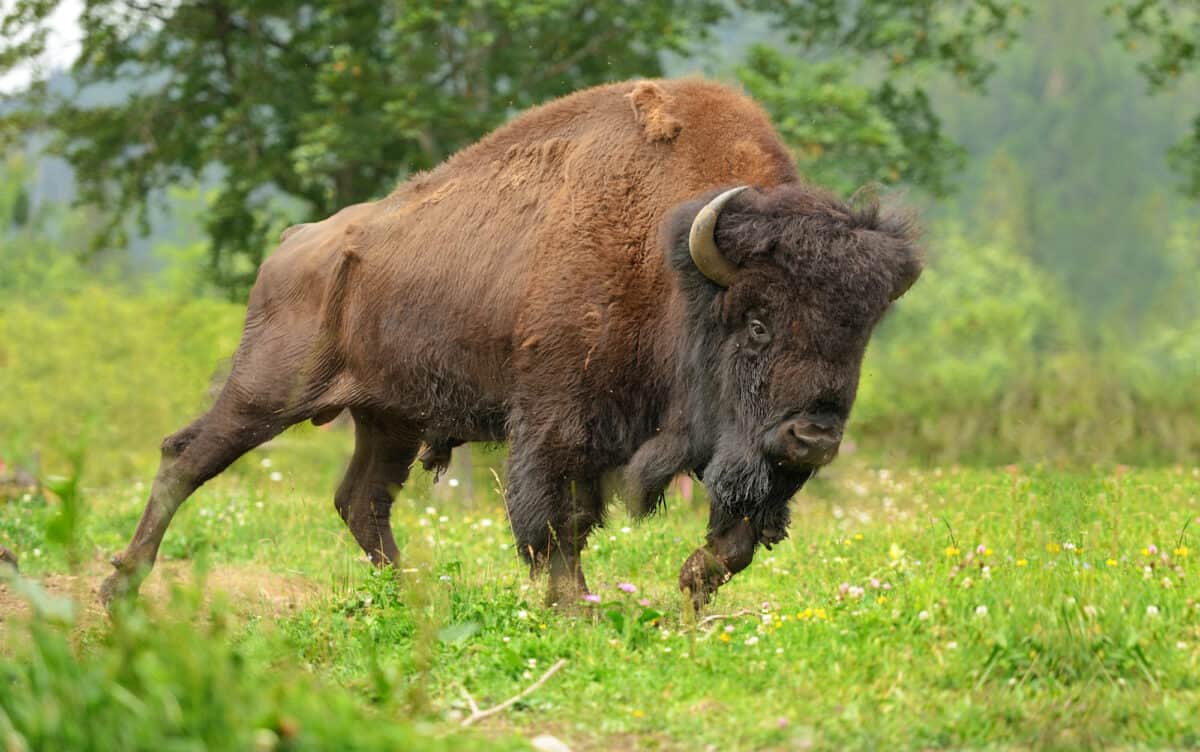
Where do they live?
Once abundantly found in the Great Bison Belt that ran from Alaska to the Gulf of Mexico, there are estimated to be only 15,000 wild bison in America today. These herds are found in National Parks and reserves where they roam in river valleys, semiopen grassland, scrublands, and semiarid lands.
The oldest bison herd roams in Yellowstone National Park. There are also free-roaming herds in the plains of the Henry Mountains, Utah, the Wind Cave National Park, South Dakota, and the Elk Islands in Canada.
What do they eat?
These large grazing mammals are herbivores. On a typical day, they forage for food between 9 and 11 hours! This shouldn’t come as a surprise – just look at the size of them!
Their diet typically consists of grasses, leafy plants, and weeds which they eat year-round. During the winter months is when the large humps on their necks come in handy by helping them swing their heads from side to side to move snow and open up grass patches.
How do they reproduce?
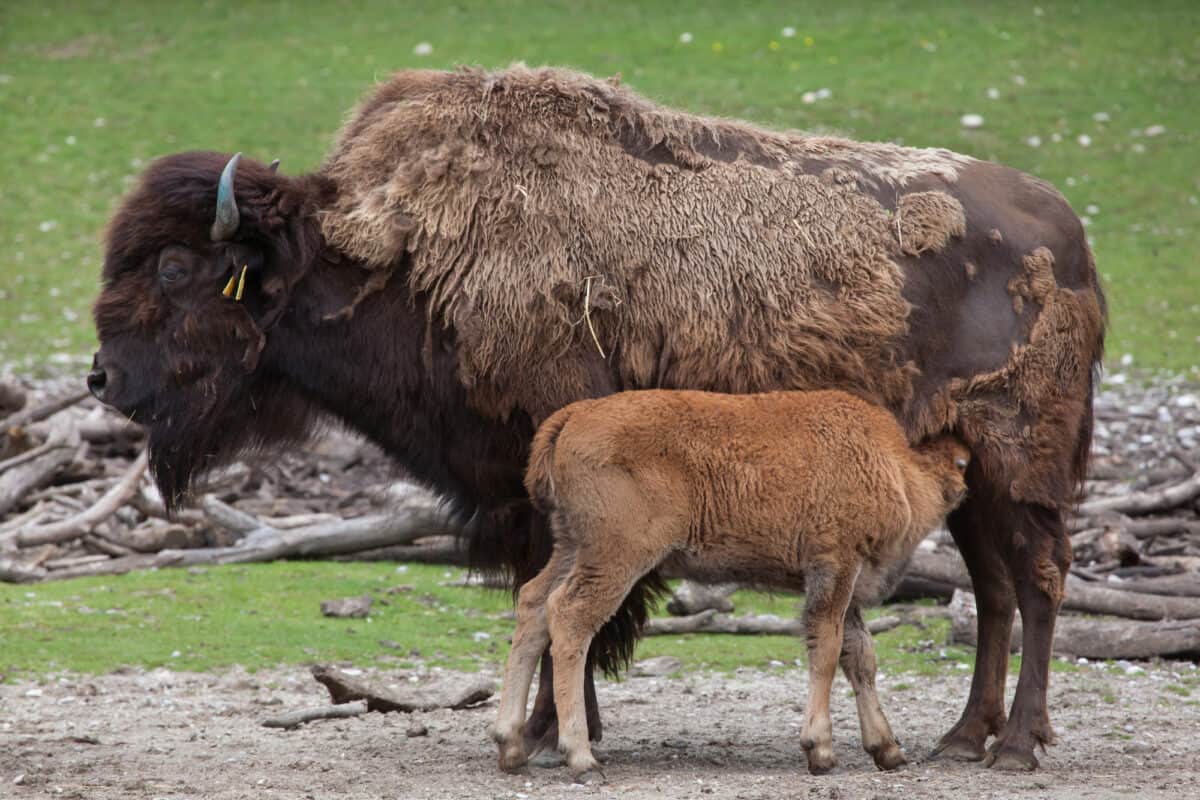
Just like other mammals, bison reproduce sexually to give live birth. Once a female is fertilized she is pregnant for around 9 and a half months and gives birth to a single calf during the spring. Pregnant cows tend to move away from their herds and give birth to their offspring in a secluded area. The young drink from their mother for 7 to 8 months, whereafter they are taught to fend for themselves during meal times.
Social behavior/structure
Females and their young live in maternal herds. Which young males leave at around 3 years of age to join bachelor herds, or they live solitary lives. The two herds rarely cross paths except during the breeding season. These herds adhere to a hierarchy mostly related to age and size.
Bison are also migratory animals, traveling to where they will be able to graze during the season.
Bison News Tags
-

Why You Should Never Approach A Bison in Yellowstone National Park
-

Bison Charges Drunk Guy For Roaring At Him In Yellowstone National Park
-

Baby Bison Falls Asleep in the Middle of the Road in Yellowstone National Park
-

The Bond Between a Wild Baby Bison and Her Rescuer
-

Tourists in Yellowstone Risk Safety by Blocking Bison Calf’s Path
-

Idaho Man Arrested For Kicking A Bison In Yellowstone National Park
-

The Great American Bison: A Remarkable Comeback
-

Disgruntled Bull Bison Chases Family Of Four In Yellowstone National Park
-

Massive Angry Bison Ambushes Family of Four in Yellowstone – They Were Too Close for Comfort
-

Bear Cubs’ Curious Encounter With Majestic Bison
-

50,000-Year-Old Bison Named Blue Babe Was Served as Bison Stew at Dinner Party in 1984, Alaska
-

How To Get Stomped On By A Bison In Yellowstone National Park
How many bison are left in America?
The bison population in America was threatened by extinction, with a population of only 325 in 1884. During the early 20th century conservation efforts were put in place to rebuild the American bison population.
Today there are estimated to be between 400,000 and 500,000 bison. Most of these are commercial herds, others live in state and national parks and around 15,000 roam freely in the wild.
Although they no longer face possible extinction, these animals are protected by conservation regulations and efforts to ensure they are still around for many years to come!
Bison Pictures
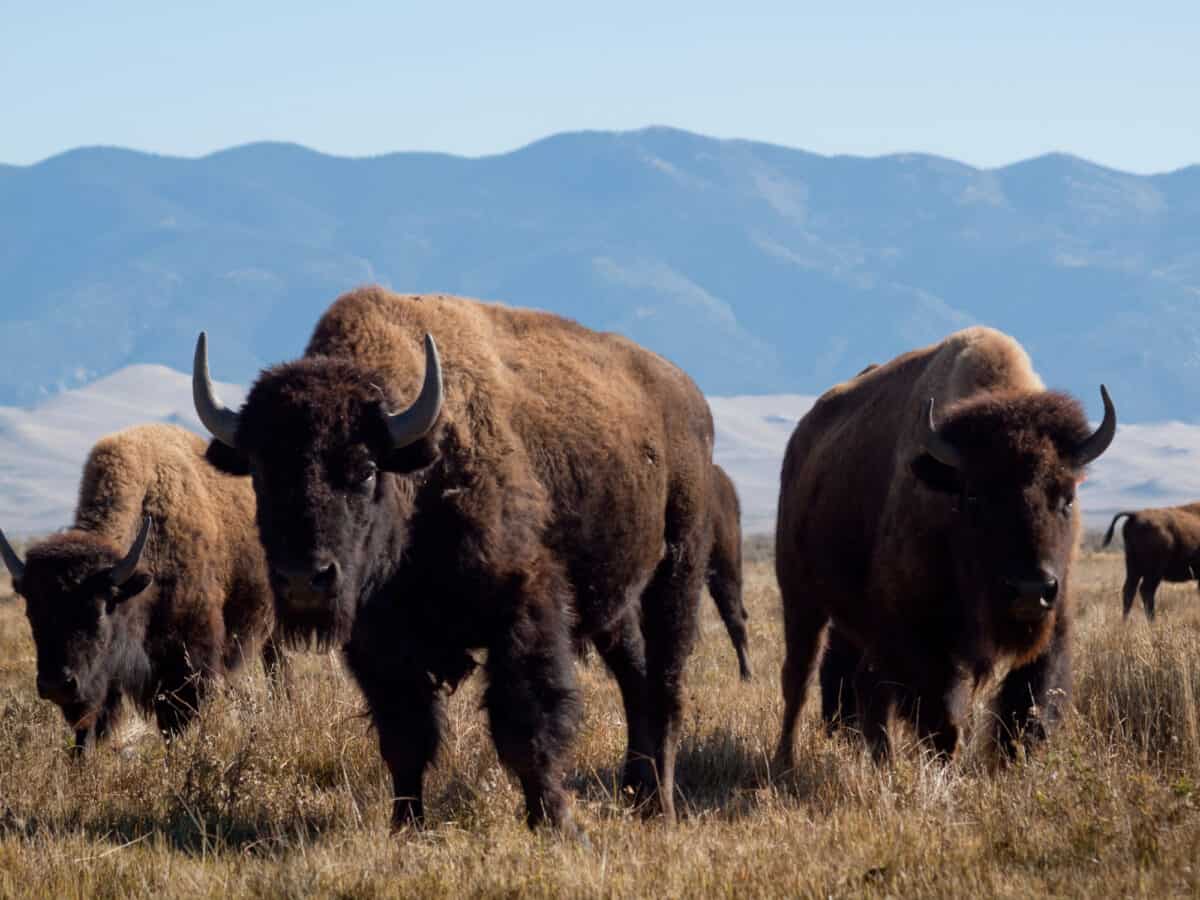
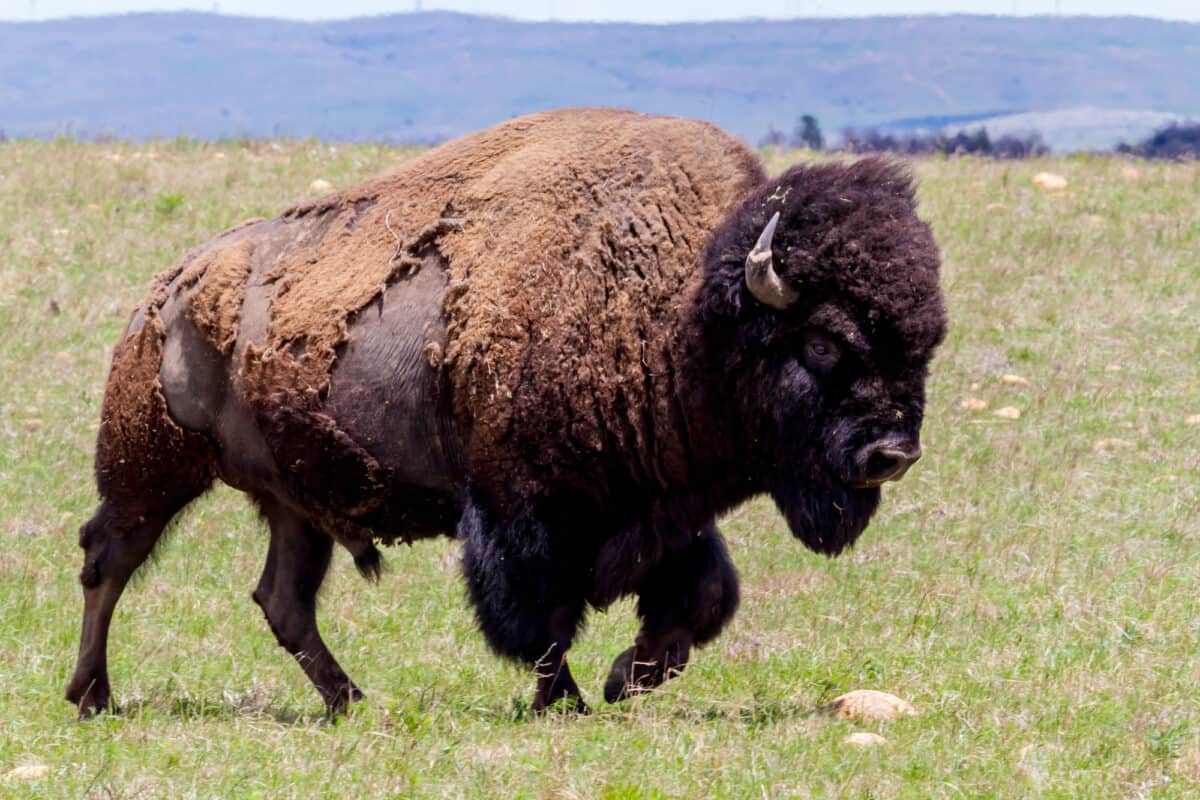


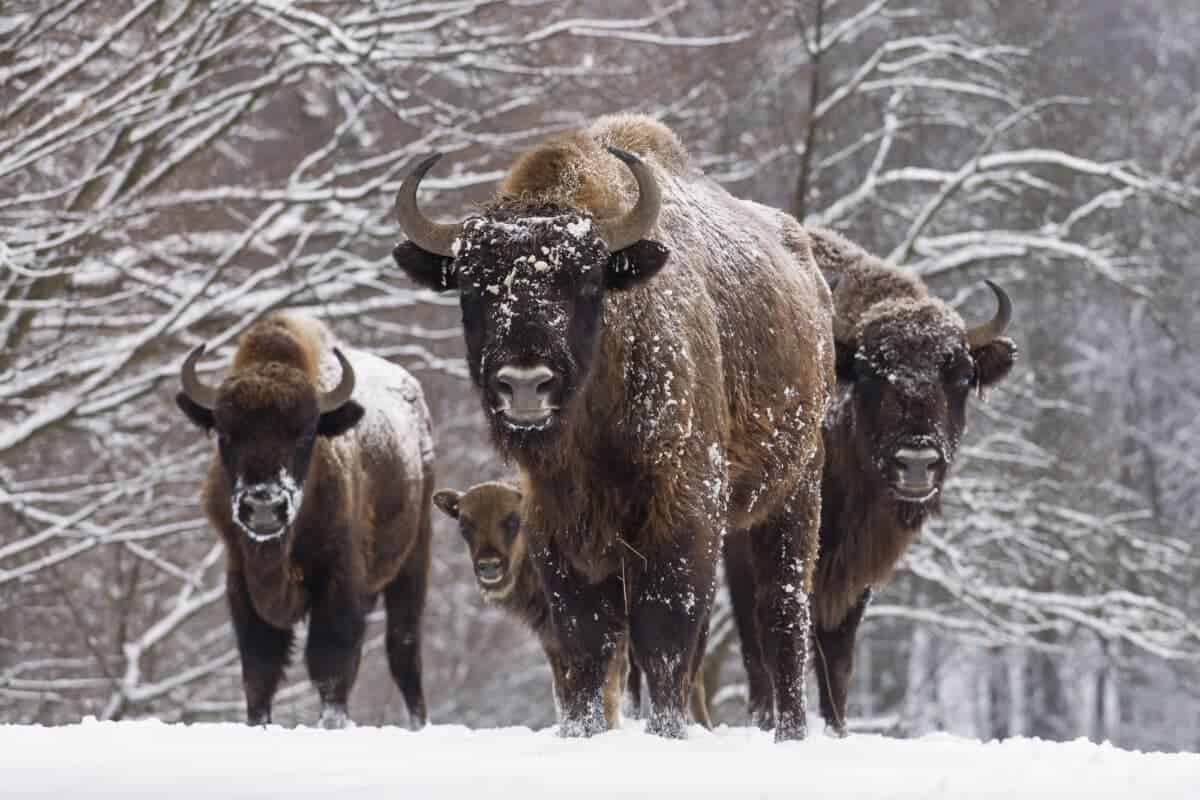
Bison History & Cultural Importance
Not only is the Bison the National Mammal of the United States, but for hundreds of years the Native Americans have had deep spiritual and cultural connections to these animals.
Native Americans considered these animals as sacred. This was due to the many gifts they received from bison that allowed them to survive and live their lives. From head to tail, they received a food source from the meat, clothes and shelter from their hides, and tools from the bones and horns.
The Native Americans also saw bison as a reminder of how one is supposed to live your life – free and working in harmony with nature. These sacred animals also form part of many holy and religious ceremonies in the tribes.
Bison FAQ
These large animals are extremely strong and fast and could pose a danger to humans if provoked or if they feel threatened by your presence. It is advised to keep safe distances from them, and all wildlife, for both their and your safety.
Although both these animals belong to the Bovidae family, bison have much larger heads and thicker fur than buffalo. Bison also live in colder climates than buffalo, and of course, they have their distinguishing humps that buffalo don’t!
When facing a potential predator, they will charge at them with their horns. If they need to they will slash and gorge their attackers with their horns to protect themselves or their young.
Learn More About American Bison
Bison Fight for Mating Rights. Source: Youtube, Uploaded: BBC Earth
Jump to our dedicated mammals’ page to learn about more cool animals!
Newest Category: American Bison
- Water Loving Golden Retriever Sneakily Takes Dips in the Neighbor’s Pool - July 22, 2024
- Angry Elephant Bull Charges Safari Vehicle - July 21, 2024
- Lioness Catches 6 Dogs In 7 Days From Kenya Homes – But Wives Are Happy - July 21, 2024

